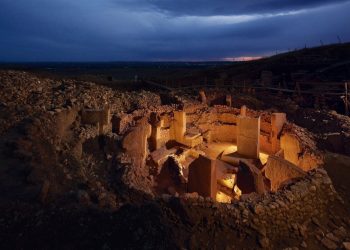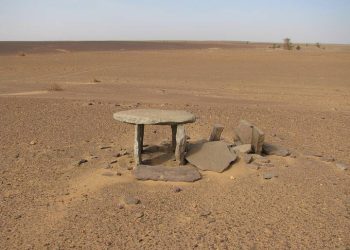Egypt is a land of wonders, secrets, and cyclopean monuments such as the Serapeum of Saqqara. Although most famous for its Pyramids at the Giza Plateau, Egypt has much more to offer. Its golden sands safeguard a history that stretches back several thousand years. Not far from the Pyramids, some 20 miles south of Cairo, we find Saqqara. This ancient Necropolis is one of the richest archeological sites in the entire country. Undoubtedly, its most famous structure is the Pyramid complex of King Djoser.
Mainstream archeologists place the Pyramid at 4,700 years old, suggesting it was the first ever built in Egypt. This would put it around 200 years older than the Great Pyramid of Giza. However, Saqqara is more than just home to the Step Pyramid. It is home to a plethora of different structures, one of which is far more mysterious than even the Pyramids.
The Serapeum of Saqqara
Discovered by archaeologist Auguste Mariette in 1851, the Serappum of Saqqara is shrouded in mystery. Mainstream archeologists argue that this subterranean structure was the burial place of the sacred bull of the Apis cult. These bulls were thought to have been reincarnations of the ancient Egyptian god Ptah. The subterranean world is home to massive, highly polished limestone sarcophagi in which the sacred Api bulls were believed to have been interred. While no ancient documents mention the construction of the Serappeum, archaeologists believe that the most ancient burials date back to the 14th century BC.
The gigantic sarcophagi
While mainstream experts argue that the sarcophagi were intended for the burial of the sacred Api Bulls, not everyone disagrees. One of the biggest reasons is the size of the massive sarcophagi, which exceed by far the size of the bulls. The bodies of the sacred bull were miniature compared to the enormous size of the sarcophagi. If this was indeed done on purpose, then we are left to wonder why the same “respect” was not given to the Pharaohs, who were mummified and placed in extremely thigh sarcophagi.
These gigantic sarcophagi irradiate mystery. In addition to their mind-boggling size, it is noteworthy that they are composed of granite. Granite was a pretty difficult material to work with. Why the massive boxes were not carved out of limestone remains a mystery, for example, a material that would have been much easier to work with. The sarcophagi measure 3.8 meters in length, 2.3 meters in width, and a height of around 2.8 meters.
Extreme precision
The precision with which the boxes were built is also mind-bending. The granite sarcophagi were crafted with extremely high precision with a tolerance of one micron, which means that when the lid of the sarcophagus was closed, it was essentially hermetically sealed. And, of course, we cannot speak of the sarcophagi and not mention their extreme weight. The lid alone of each of the sarcophagi has been calculated at 30 tons.
How these massive stones were transported from the quarry and placed inside the Serapeum and on top of the sarcophagi is a mystery of its own. The weight of the sarcophagi, without the lid, has been estimated at around 50 tons. The Serapeum of Saqqara is a subterranean wonder excavated from the bedrock to a depth of approximately 12 meters.
Have something to add? Visit Curiosmos on Facebook. Join the discussion in our mobile Telegram group. Also, follow us on Google News.











